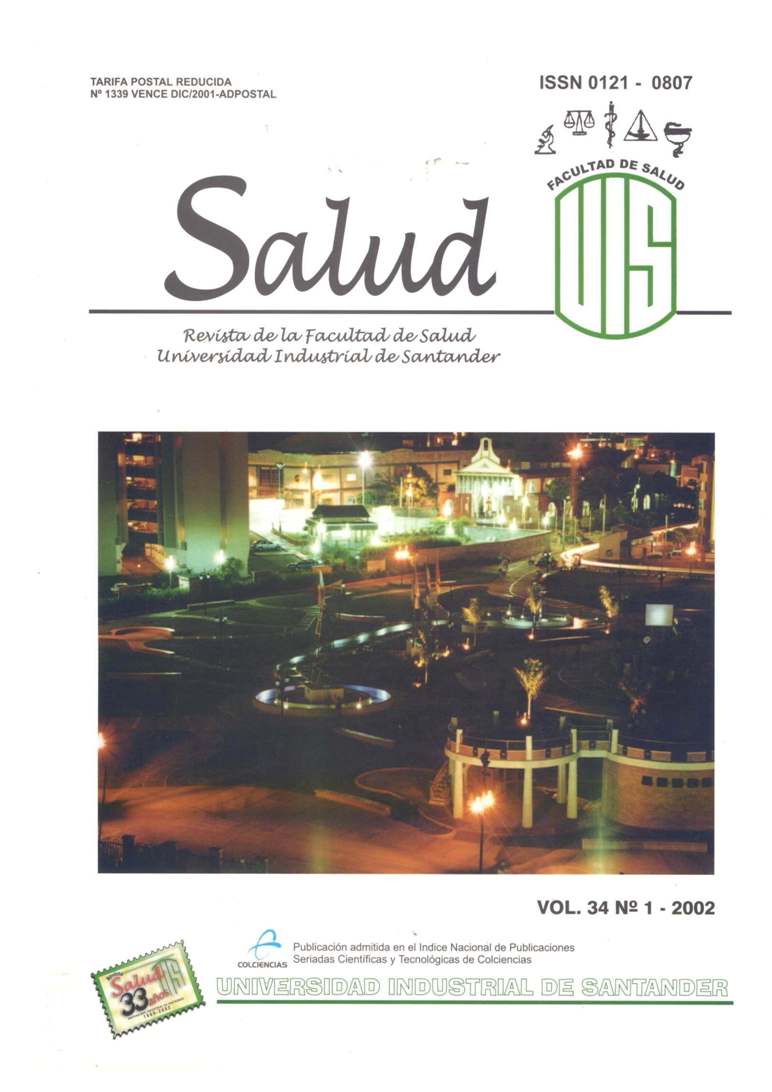Resumo
RESUMEN
El propósito de este estudio fue determinar la presencia del Músculo Palmar Longo (MPL) considerando el sexo y el componente étnico en una población de Bucaramanga. Materiales y métodos: se evaluó la presencia del MPL, mediante la visualización directa de su tendón, en los antebrazos de 1214 individuos mayores de 10 años, de sexo masculino y femenino y de raza blanca y mestiza. La expresión del tendón del MPL requiere de una maniobra específica de oposición de los pulgares y flexión de las articulaciones radiocarpianas. Resultados; se observó agenesia global de 20,3%, correspondiendo a los blancos 21.5% y a los mestizos 19%. Considerando el sexo, la agenesia del palmar fue mayor en mujeres (22.2%) que en los hombres (17,2%), siendo la diferencia significativa (chi cuadrado yates corrected x2= 4,07, p< 0.04). Predominó la ausencia muscular bilateral (10.3%) sobre la unilateral izquierda (5.8%) y derecha (4.2%). Conclusiones: la incidencia de la agenesia observada del palmar longo se ubica en un rango intermedio a lo señalado para las poblaciones étnicas: caucasoides, negroides y mongoloides. Existe concordancia con la mayoría de estudios que señalan mayor agenesia del palmar en mujeres que en hombres y en el lado izquierdo. Salud UIS 2002; 34: 12-17
Palabras Clave: Anatomía, Sistema muscular, Palmar longo, Agenesia.
ABSTRACT
The purpose of this study was to determine the presence of the Palmaris Longus Muscle (PLM) considering the sex and the ethnic component in a population of Bucaramanga. Materials and methods: the presence of the PLM was evaluated, by means of the direct visualization of its tendon, in the forearms of 1214 individuals bigger than 10 years old, of males and females and of white and half-breed race. The expression of the tendon of the PLM requires of a specific maneuver of opposition of the thumbs and flexion of the radiocarpian articulations. Results: global absence of 20.3% was observed, corresponding to the white race 21.5% and to the half-breed race 19%. Considering the sex, the absence of the palmaris longus was bigger in women (22.2%) that in the men (17.2%), being the significant difference {squared Chi: Yates corrected x1 = 4.07, p <0.04). The bilateral muscular absence (10.3%) was most important than the unilateral left (5.8%) and right (4.2%). Conclusions: the incidence of the observed absence of the palmaris longus is located in an intermedíate range to that pointed out for the ethnic populations: caucasoides, negroid and mongoloid. Agreement exists with most of studies that point out bigger absence of the palmaris longus in women than in man and in the left side, Salud UIS 2002; 34: 12-17
Key Words: Anatomy, Muscular system, Palmaris longus, Agenesis.
Se autoriza la reproducción total o parcial de la obra para fines educativos, siempre y cuando se cite la fuente.
Esta obra está bajo una Licencia Creative Commons Atribución 4.0 Pública Internacional.
